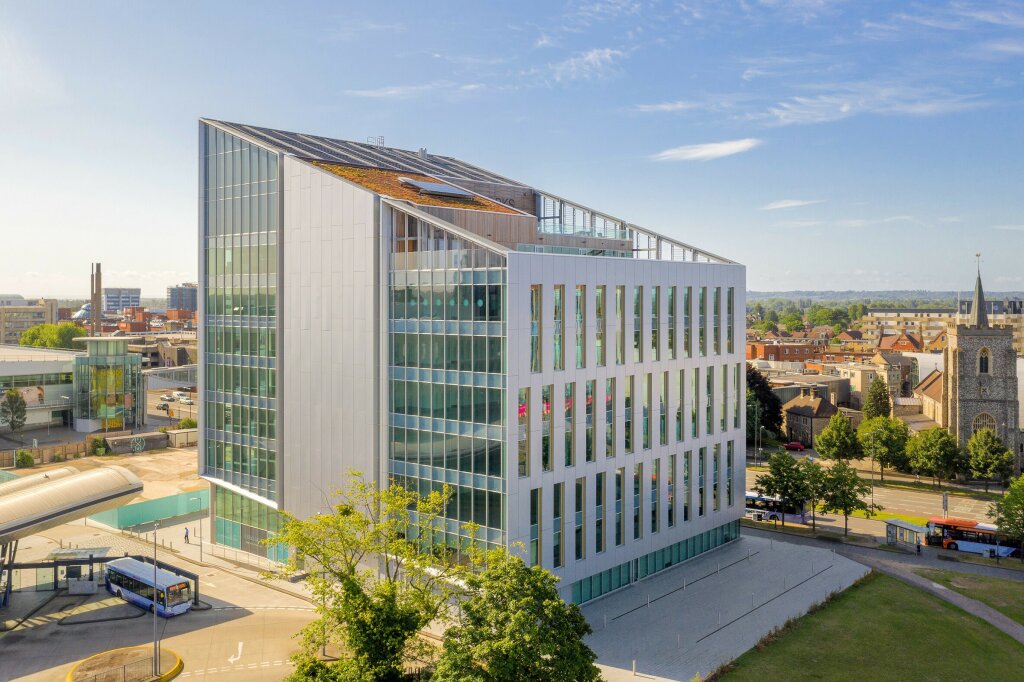Amidst increasing pressure by organisations for staff to return to the office, more people are now back working full-time in the office than at any time since the pandemic, meaning its role in improving productivity has never been more important.
But the way we work has fundamentally changed. Offices are no longer simply a place to work. Forward-thinking businesses that want to attract the best talent increasingly recognise that workplaces need to be flexible, collaborative hubs that make a positive contribution to employees' quality of life.
From gyms, treatment rooms, cycling facilities and cafes, through to smart systems that monitor air quality and provide contactless access from street to office floor, buildings now need to put the happiness and health - both physical and mental - of occupants first. That, in turn, helps tenants to attract and retain the best talent while also providing an environment that helps people be at their most productive in the workplace.
This isn't just utopian thinking: research shows that light and airy workspaces make us feel better. Natural light is better for eyesight and a study by the Department of Design and Environmental Analysis at Cornell University revealed that employees sitting within 10 feet of a window reported an 84% reduction in the symptoms of eye strain. The University of Minnesota found that high ceiling heights boost abstract thinking and studies by the World Green Building Council and Human Spaces showed that biophilic design can improve productivity by 6% and creativity by up to 15%.
Being surrounded by nature and plants has also been shown to have stress-busting properties. Increasingly, high-quality new office developments are incorporating biophilic design features, such as green walls and indoor plants that help lower CO2 levels, and outdoor areas such as the 12,329 sq ft of landscaped outdoor terraces at The Kensington Building office development in London.
This focus on air quality is crucial, as poorly ventilated offices with high levels of carbon dioxide can make an important difference to productivity, with a BCO study showing that lowering CO2 levels caused employees' test scores to improve by up to 12%. In one of the buildings tested, people worked 60% faster with reduced CO2 concentrations, completing tests in a mean time of 8.2 minutes, compared with 13.3 minutes with more CO2 in the atmosphere.
“At The Future Works, our 100,000 sq ft office building in Slough (pictured), we have prioritised this. The building has a 3,000 sq ft communal roof terrace, indoor plants in the communal areas and was the first office building in the UK to achieve a Platinum AirScore for its indoor air quality, with live data on air quality (as well as energy and water usage) displayed on screens throughout the building for occupiers to view.
”
With increased physical activity linked to improved wellbeing, landlords should also make it easier for staff to combine exercise with their working day, for instance by promoting active travel through the provision of changing, shower and secure cycle storage facilities. The Kensington Building puts the needs of active commuters front and centre, with a dedicated entrance for cyclists and runners into the 165 ground-floor cycle parking spaces and bicycle repair station, and then on to luxury changing facilities.
Three in five employees felt that their mental health worsened last year, an issue that is heightened in young people, with as many as one in 20 in their early twenties 'economically inactive' due to ill-health - a higher proportion out of work than among counterparts in their 40s. With the number of people out of work because of long-term sickness leaping to a record high of more than 2.8 million, well-designed and appealing workplaces with amenities that benefit staff and foster collaboration have never been more valuable.
There is no silver bullet to the UK's productivity puzzle, but businesses must take a holistic view. By investing in well-designed, appealing workplaces that foster collaboration and include amenities that benefit staff, they will allow the wellbeing and productivity of employees to thrive.
